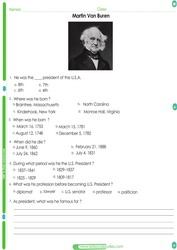Antebellum Period: Economies of the North and South
Antebellum Period: Economies of the North and South - social studies skills studied in 2nd, 3rd, 4th, 5th grades.When it comes to history, one of the defining parts of it is wars. Sometimes, we break history into sections just based on what war was going on at the time. It’s not really that much of a surprise, considering that America has been at war for most of its existence as a nation, either with themselves or someone else. But we often tend to forget the parts of history that came between wars, mostly because it’s hard to remember stuff that isn’t as exciting. This is true for the Civil War too. We all remember a lot about the Civil War, but not a lot about the time of relative peace before it. Continue reading below>>>
Part of what lead to the Civil War in the first place was the two very different economies of the North and the South. With such different economies, it is no surprise that the two sides did not see eye to eye on a lot of things, including slavery. In the North, much of the economy focused on industry, fishing, and other things that were suited for the Northern states. Most of the production of the North focused on metal and other industrial goods, such as building materials and home goods.
But the South focused a lot more on agriculture. There was a lot more farming going on in the South, and this is why they needed a very large labor force. This was also why the South wanted to keep slavery so badly. Running their plantations took a lot of people, and paying free citizens to do it was very expensive. With slavery, they could keep producing without paying too much. Soon, a massive part of the Southern economy was dependent on slavery, which explains why they didn’t want to give it up.
In the end though, the difference in the two economies decided the war. The South’s agricultural economy couldn’t produce the same amount of weapons and ammunition as the North’s industrial economy could. The South focused so much on agriculture and especially cotton that they didn’t have the right resources to win a long war with the much more prepared North.
That said, while what they were doing was well and truly wrong, you can’t blame them for not wanting to let go of something that made their economy run smoothly. The end of slavery did indeed have a major impact on the economy of the South after the war, proving how important slave labor had been to keeping everything running smoothly. But thankfully, with the reconstruction period following the war, the South found ways to rebuild their economy without resorting to terrible deeds, and America was made whole once again after what was technically one of the bloodiest wars in our history. Few people remember the Antebellum period when they think about the Civil War, but don’t forget that it was this period that sparked the issued that lead to the war in the first place.




